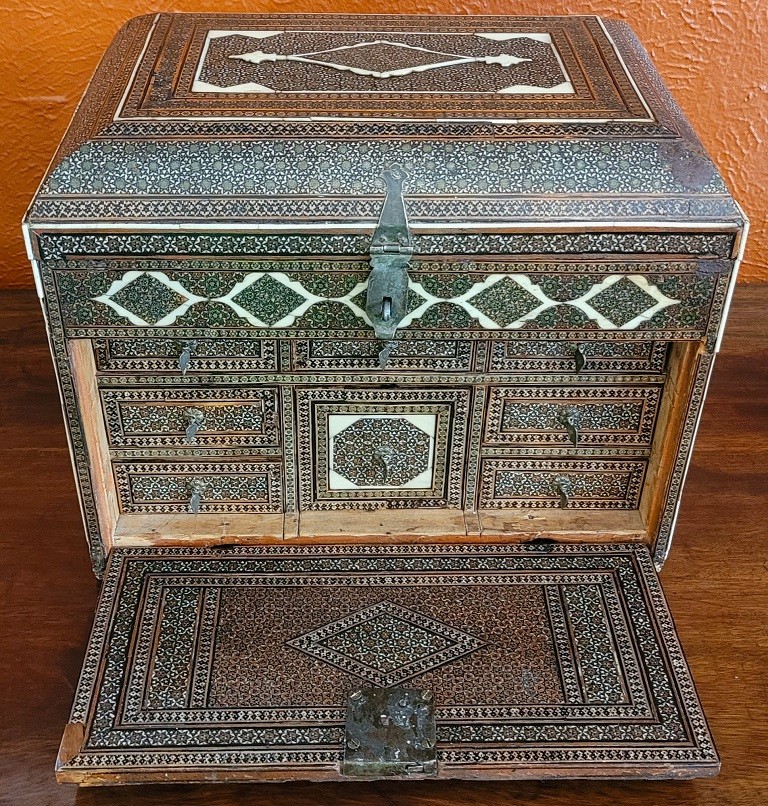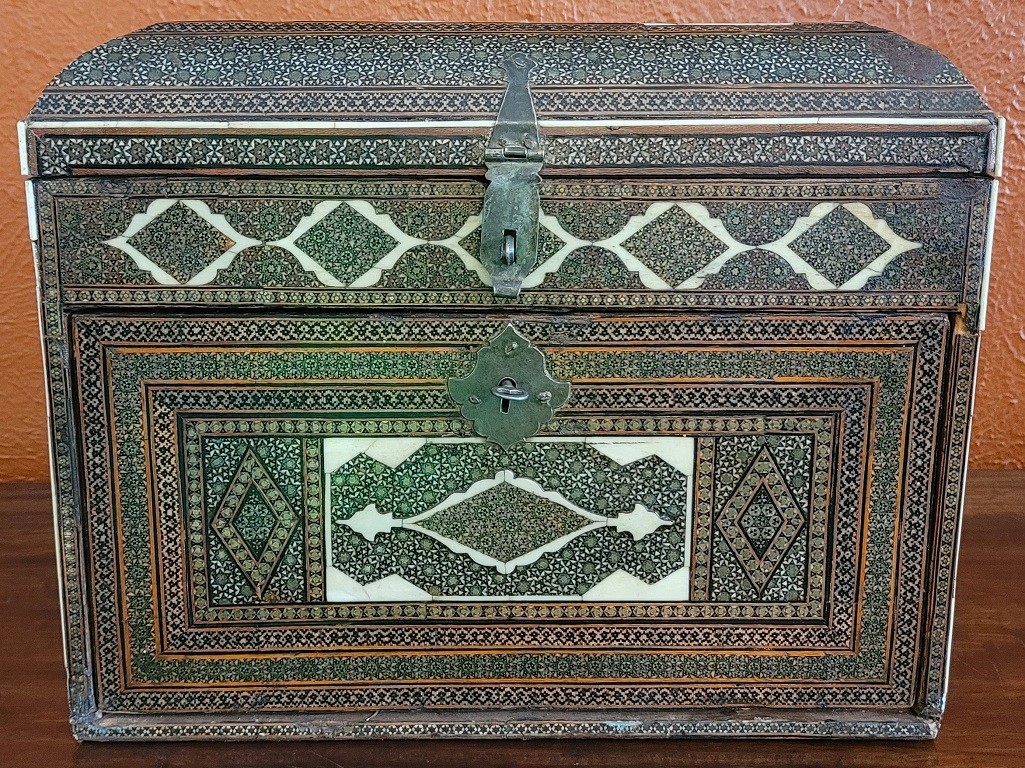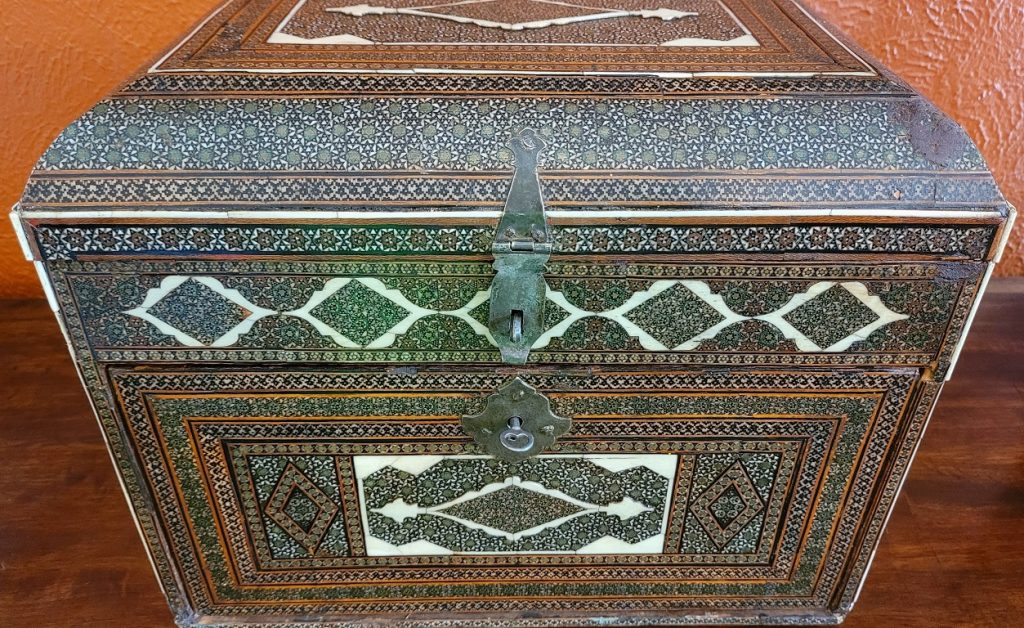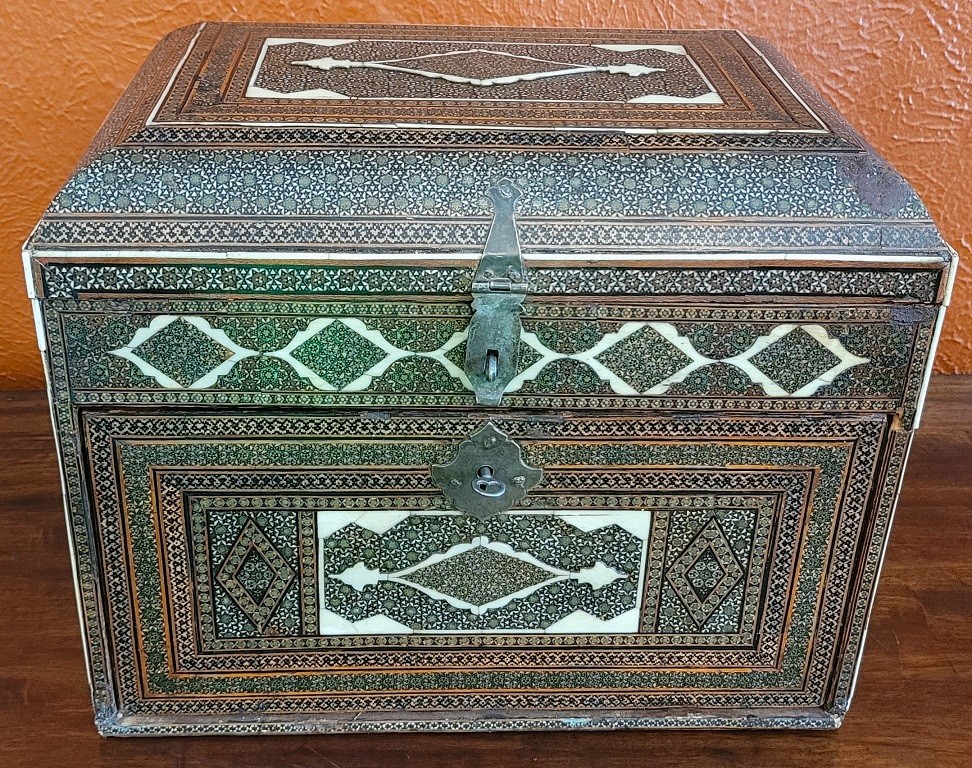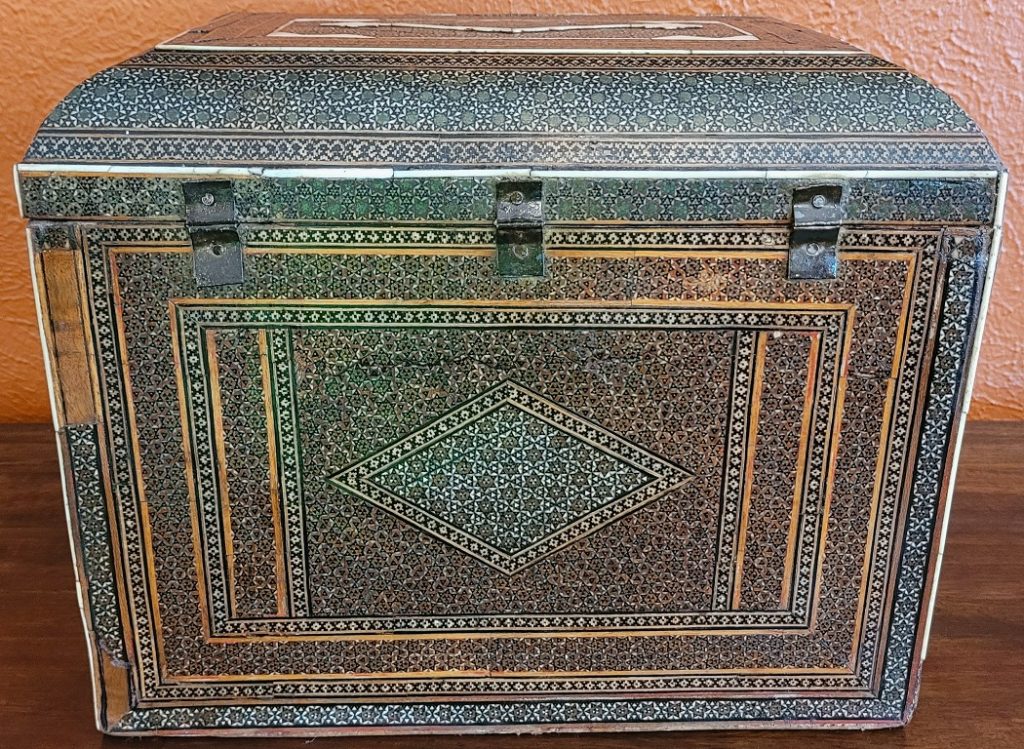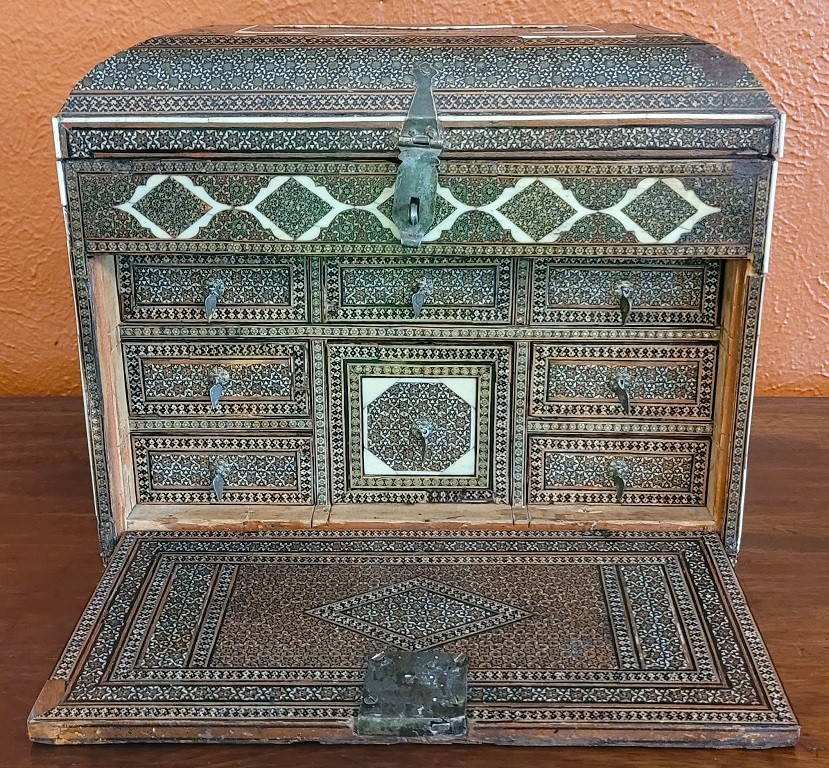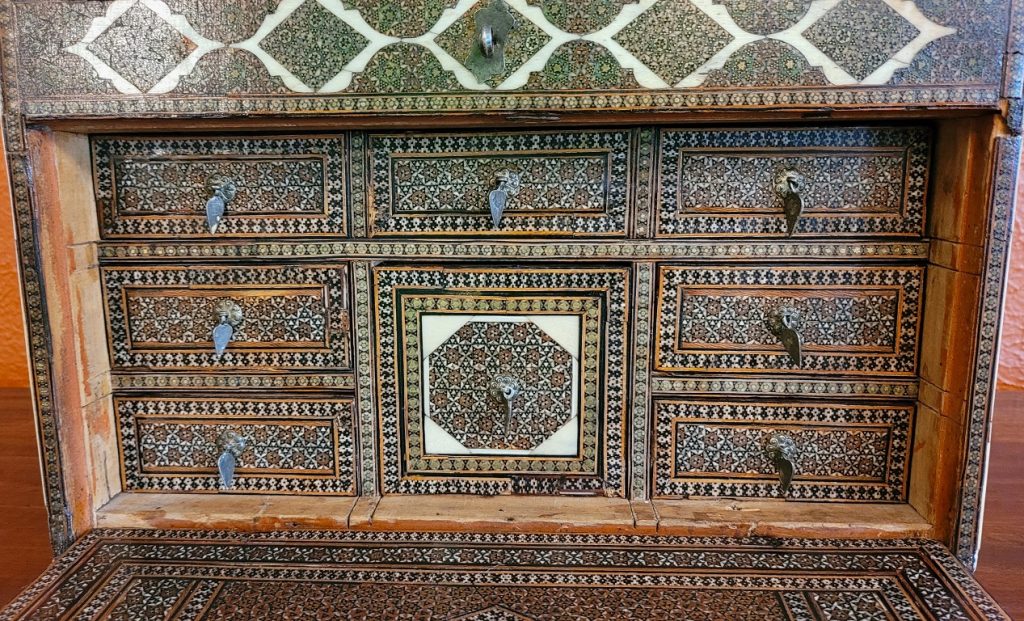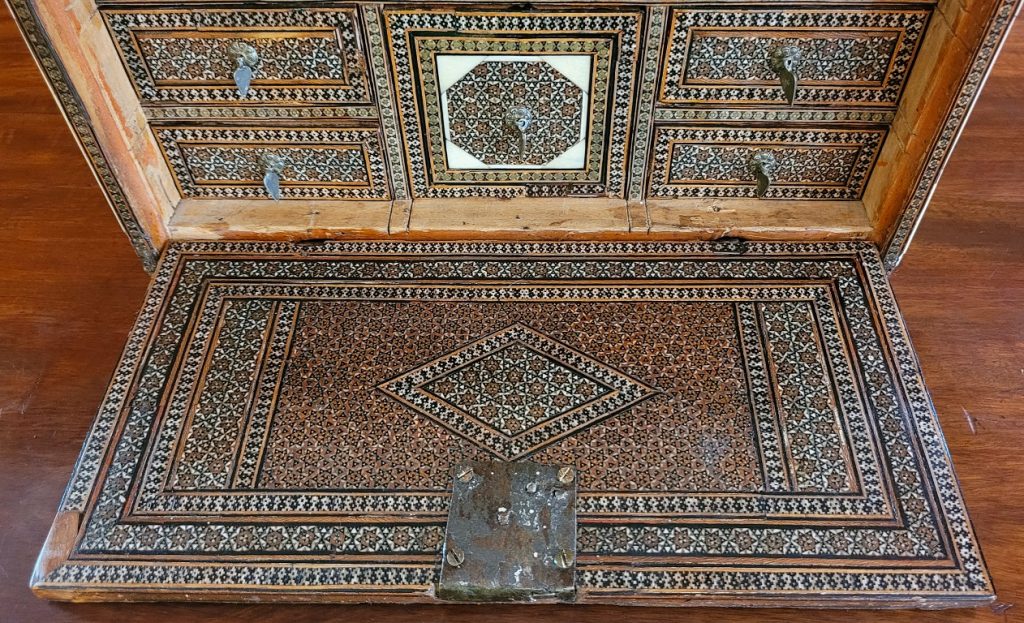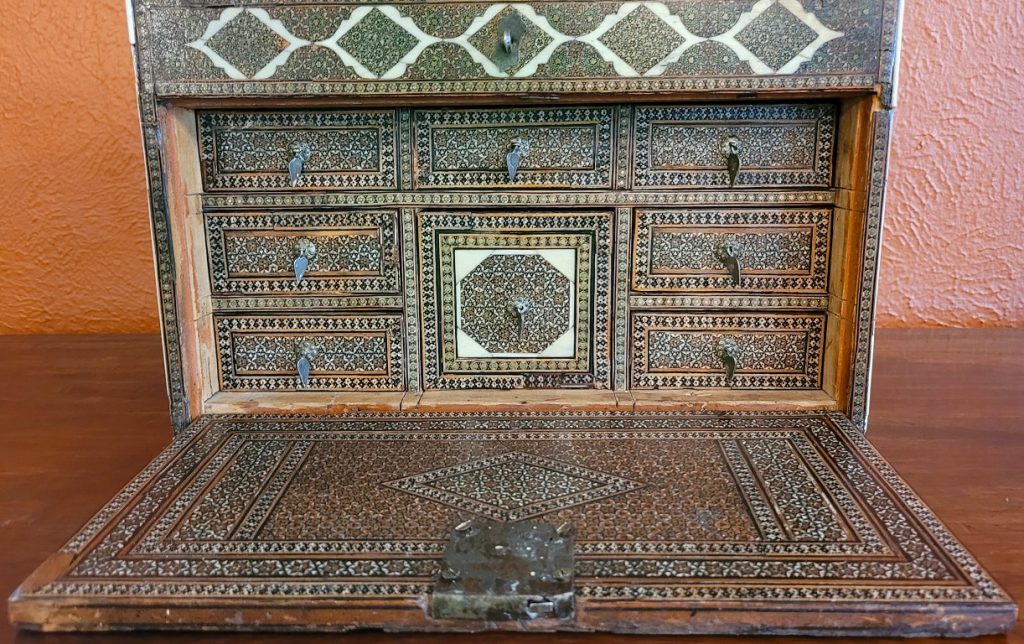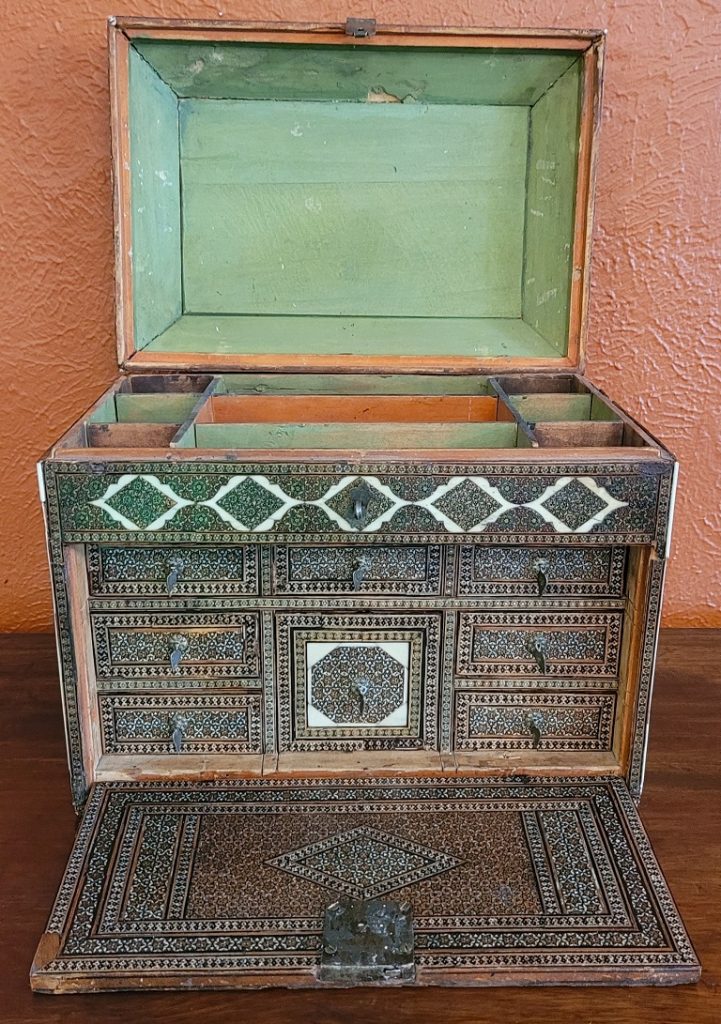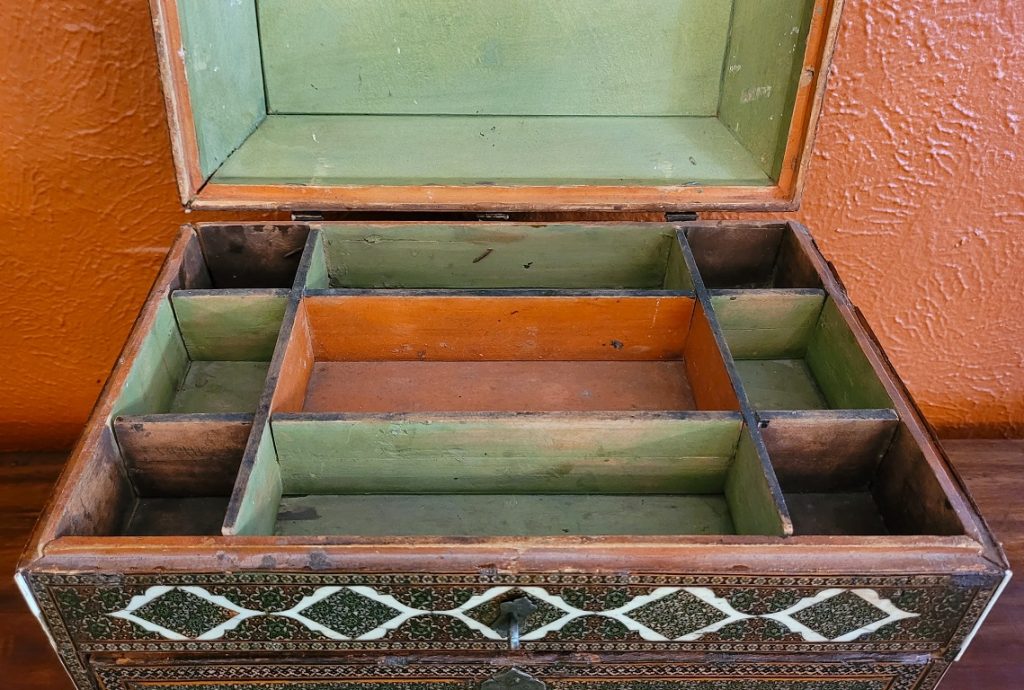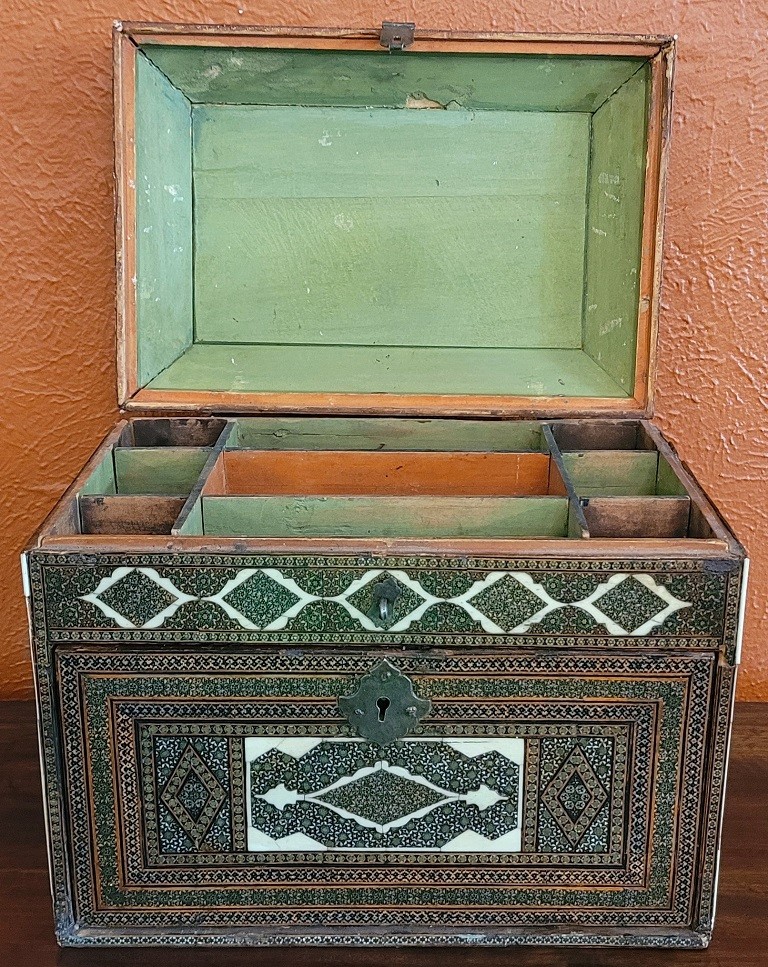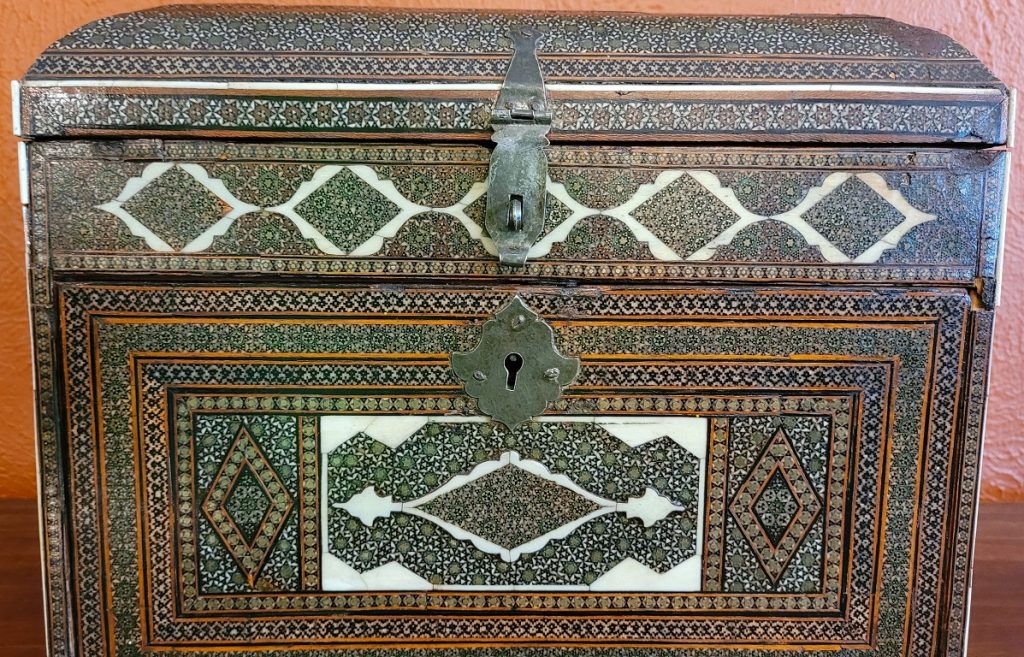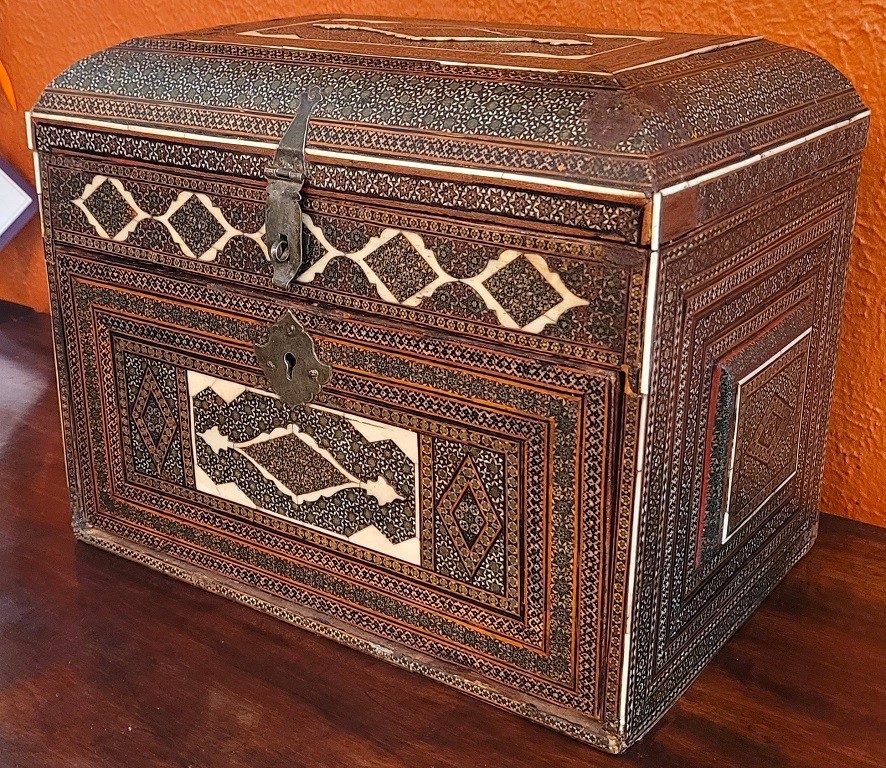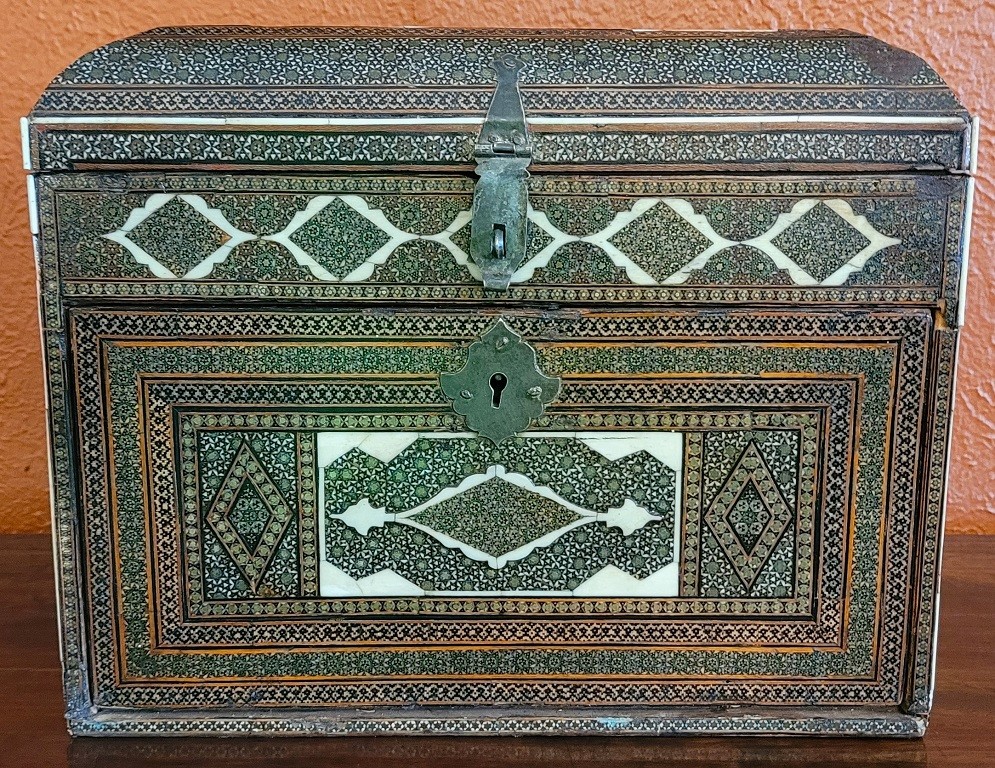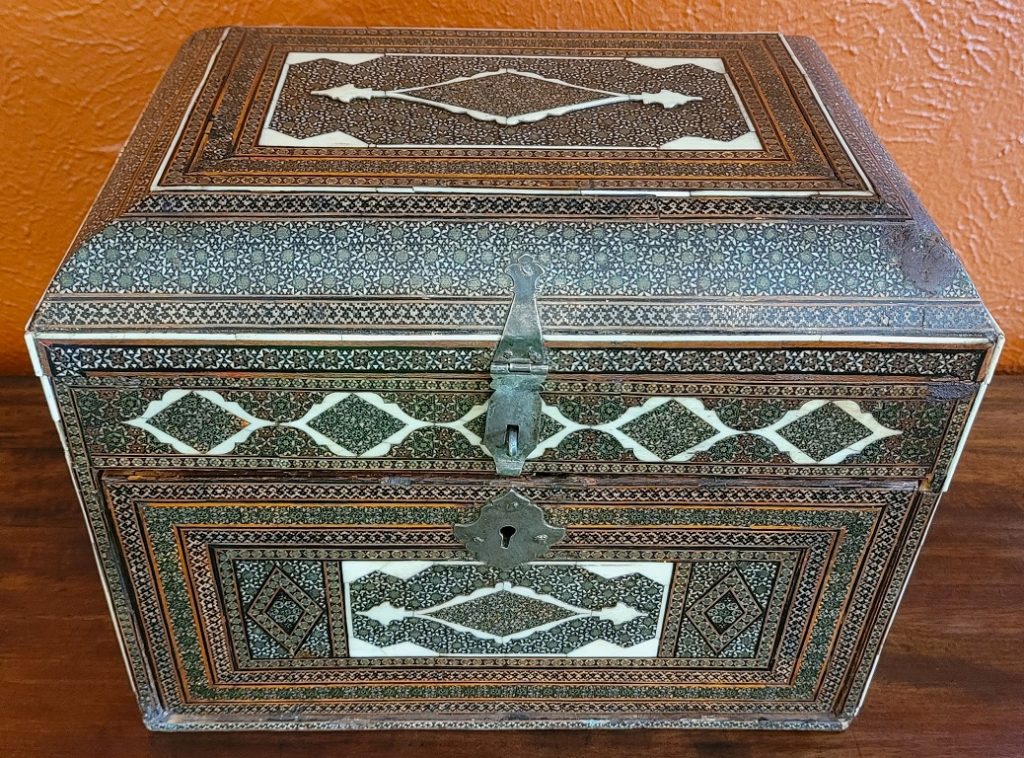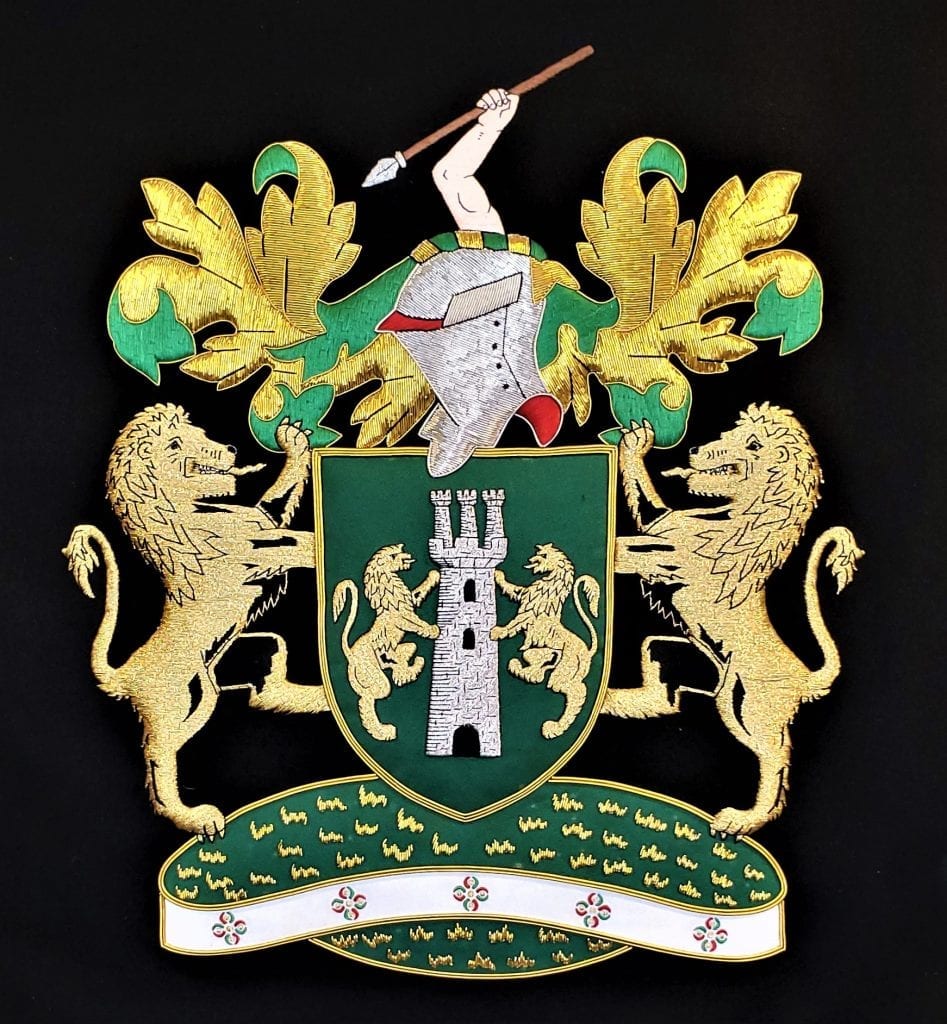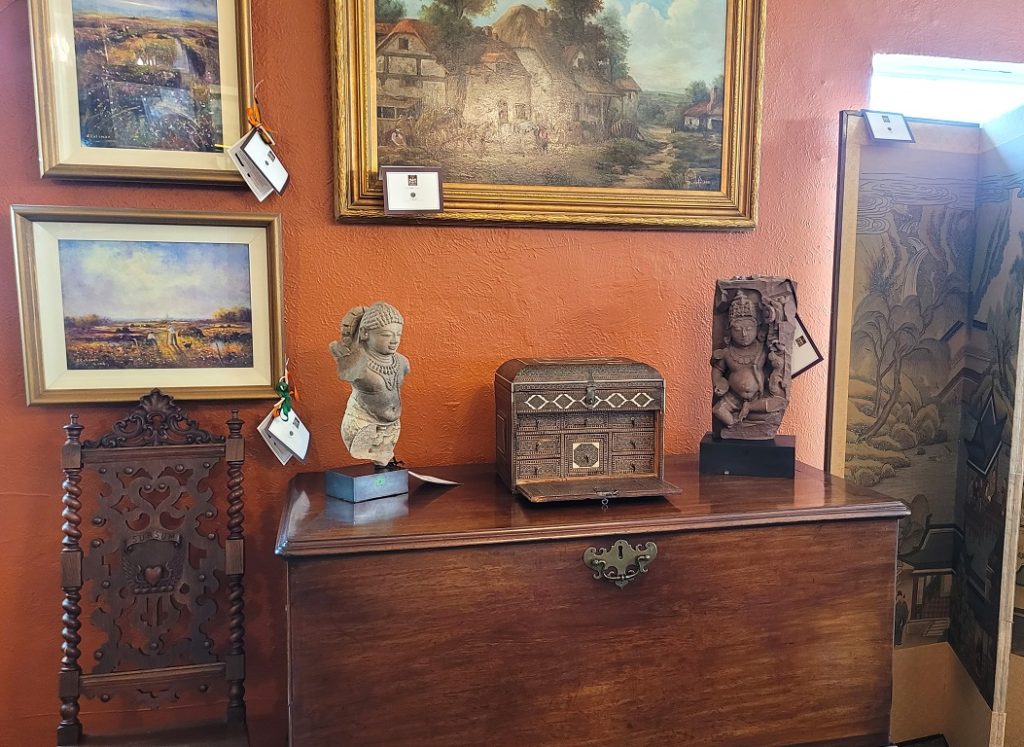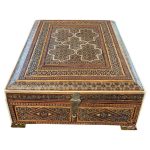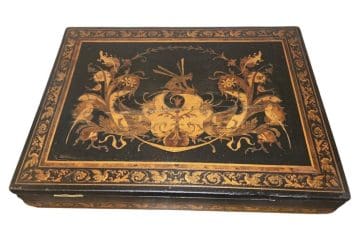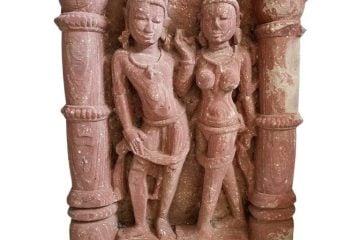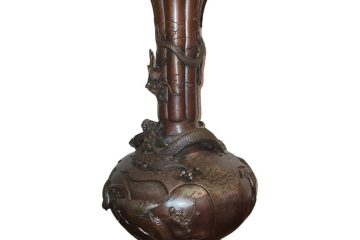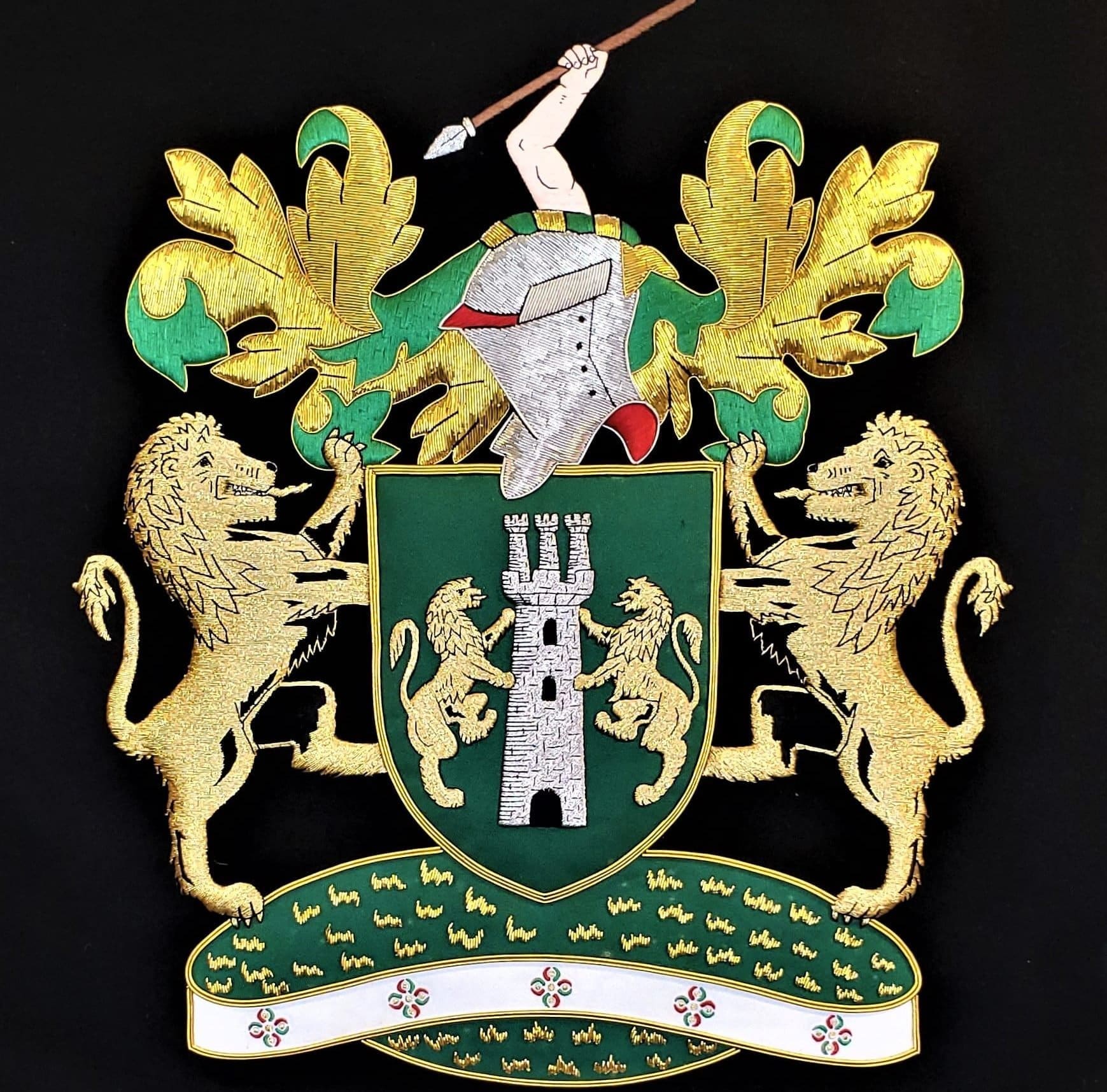18C Indo-Portuguese Vargueno Mini Cabinet
PRESENTING a FABULOUSLY RARE 18C Indo-Portuguese Vargueno Mini Cabinet.
EXTREMELY RARE, HIGHLY IMPORTANT AND DESIRABLE Colonial piece !
It is an Indo-Portuguese Vargueno Mini Cabinet, circa 1780, with strong Persian influences.
Vargueno’s are typically Portuguese or Spanish.
Portugal, through its colonization of parts of Asia in the 17th and 18th Centuries, had a strong influence on furniture being made in India in the 17th and 18th Centuries.
The Portuguese colonization of the sub-continent was mainly in South India, whilst the Persian influences would have been in the North.
Many examples of Indo-Portuguese Vargueno’s can be found. Typically, they are constructed using ivory and stained woods to depict neo-classical type scenes. These boxes command a hefty price tag !!
What makes this one EVEN MORE SPECIAL is that it is clearly a Vargueno box from that time period but it constructed entirely using a more Persian influenced mosaic of bone, brass, micro-mosaic green precious stone, pewter etc. in star or geometric shapes.
The top opens to reveal a number of storage sections.
The front opens to reveal more exquisite mosaic work and a number of spice drawers, hence, being called a vargueno!
A TRULY UNIQUE piece !! A TRULY IMPORTANT piece !!
This should really be in a Museum !
IF YOU LIKE THIS THEN CHECK OUT THE INDO-PERSIAN VANITY BOX ALSO IN THIS SECTION !!
Indo-Portuguese Furniture:
Indo-Portuguese furniture European furniture made in the Portuguese colonies from indigenous teak and ebony, first for local European workers and later for export.
Chairs, tables, bedsteads and Case furniture were made from the early 16th to the mid 17th century in the Portuguese colonies of Cochin, Ceylon (now Sri Lanka), Malacca (west coast of the Malaysian peninsula) and also in Goa, Bombay and near Calcutta.
From the mid-17th century, Dutch occupation resulted in the development of Dutch colonial furniture in most previously Portuguese colonies, except Goa.
Link: http://www.millersantiquesguide.com/a-to-z/indo-portuguese-furniture/
INDO PERSIAN: “Indo-Persian culture” refers to those Persian aspects that have been integrated into or absorbed into the cultures of the Indian Subcontinent (hence the prefix “Indo”), and in particular, into North India, and modern-day Pakistan.
Persian influence was first introduced to the South Asia by Muslim rulers of Turkic and Afghan origin, especially with the Delhi Sultanate from the 13th century, and in the 16th to 19th century by the Mughal Empire. In general, from its earliest days, aspects of the culture and language were brought to the subcontinent by various Persianized Central Asian Turkic and Afghan rulers and conquerors,[1] amongst them the most notable being Mahmud of Ghazni in the 11th century AD.
Persian was the official language of the Delhi Sultanate, the Mughal Empire, and their successor states, as well as the cultured language of poetry and literature. Many of the Sultans and nobility in the Sultanate period were Persianised Turks from Central Asia who spoke Turkic languages as their mother tongues. The Mughals were also culturally Persianized Central Asians (of Turco-Mongol origin), but spoke Chagatai Turkic as their first language at the beginning, before eventually adopting Persian. Persian became the preferred language of the Muslim elite of north India. Muzaffar Alam, a noted scholar of Mughal and Indo-Persian history, suggests that Persian became the lingua franca of the empire under Akbar for various political and social factors due to its non-sectarian and fluid nature.[2] The influence of these languages led to a vernacular that is the ancestor of today’s Urdu.
Link: https://en.wikipedia.org/wiki/Indo-Persian_culture
18C Indo-Portuguese Vargueno Mini Cabinet.
Provenance: Part of our large Anglo-Indian Collection.
Dimensions: 14″ wide x 11.25″ high and 9.75″ deep
Condition: Good condition for it’s age and construction. Some losses of inlay/mosaic with minor repairs. Has key but lock doesn’t work.
SALE PRICE NOW: $5,600
